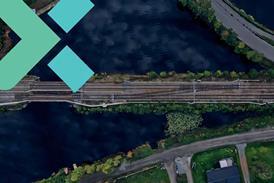Close menu
- Home
-
News
- Back to parent navigation item
- News
- Traction and rolling stock
- Passenger
- High speed
- Freight
- Infrastructure
- Policy
- Technology
- Ticketing
- Business
- Research, training and skills
- Accessibility and inclusion
- People
- Urban rail news
- Suburban and commuter rail
- Metro
- Light rail and tram
- Monorail and peoplemover
- Regions
- InnoTrans
- In depth
- Events
- Data
- Maps
- Tenders & Jobs
- Sponsored content
- Insights
Saudi Arabia: Industry meets in a thriving market
2020-01-28T12:16:00

As part of its Vision 2030 national development plan, Saudi Arabia is investing heavily in both its main line and urban rail networks. The Railway Forum in Riyadh on January 28-29 will give industry leaders from around the world a chance to understand first-hand the opportunities on offer.
Already have an account? LOG IN
To continue…
You’ve reached your limit of content for the month














